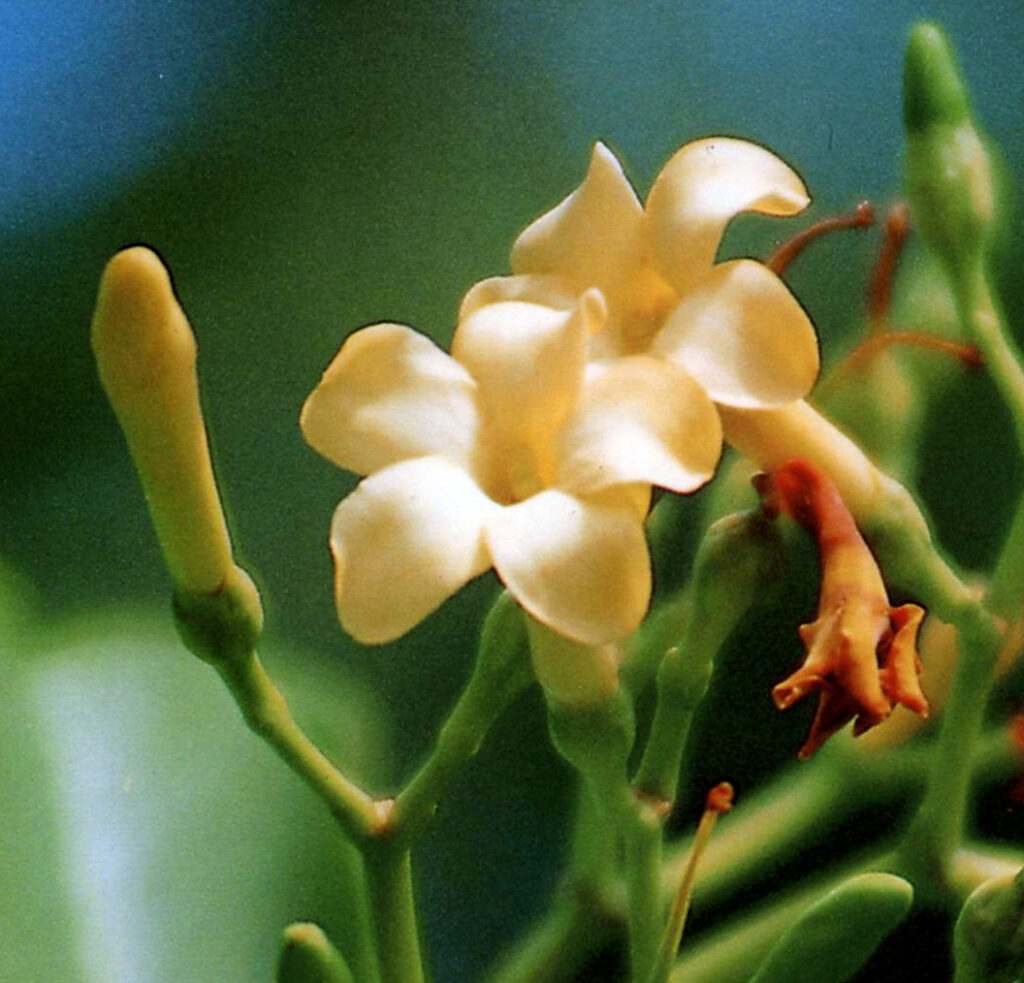May 1 is a special day in many cultures. The Celts and Saxons and others in pre-Christian Europe celebrated the first planting and the beauty of spring.
These agrarian celebrations continued down through the centuries and remain today. In much of Europe, May 1 is also a labor holiday, honoring the labor workers. (Akaka)
The first of May, however, has a unique and very special significance to the people of Hawaiʻi. May Day is Lei Day in Hawaiʻi. (Akaka)
Lei making in Hawaiʻi begins with the arrival of the Polynesians. Polynesians, across the South Pacific, adorned their bodies with strings of flowers and vines.
When they arrived in Hawai`i, in addition to the useful plants they brought for food, medicine and building, they also brought plants with flowers used for decoration and adornment.
Lei throughout Polynesia were generally similar. Types included temporary fragrant lei such as maile and hala, as well as non-perishable lei like lei niho palaoa (whale or walrus bone), lei pupu (shell) and lei hulu manu (feather.)
“The leis of Old Hawaii were made of both semi-permanent materials – hair, bone, ivory, seeds, teeth, feathers, and shells; and the traditional flower and leaf leis – twined vines, seaweed and leaf stems, woven and twisted leaves, strung and bound flowers of every description.”
“Leis were symbols of love, of a spiritual meaning or connection, of healing, and of respect. There are many references to leis, or as the circle of a lei, being symbolic of the circle of a family, embracing, or love itself: “Like a living first-born child is love, A lei constantly desired and worn.” (Na Mele Welo, Songs of Our Heritage, (translated by Mary Kawena Pukui,) Gecko Farms)
Robert Elwes, an artist who visited the Hawaiian islands in 1849, wrote that Hawaiian women “delight in flowers, and wear wreaths on their heads in the most beautiful way.”
“A lei is a garland of flowers joined together in a manner which can be worn. There are many different styles of lei made of numerous types of flowers. The type of flower used determines the manner in which the lei is woven.” (Akaka)
Reportedly, Don Blanding, writing in his book ‘Hula Moons,’ explained the origins of Lei Day: “Along in the latter part of 1927 I had an idea; not that that gave me a headache, but it seemed such a good one that I had to tell some one about it, so I told the editors of the Honolulu Star-Bulletin, the paper on which I worked.”
“They agreed that it was a good idea and that we ought to present it to the public, which we proceeded to do. It took hold at once and resulted in something decidedly beautiful.”
“… The custom of weaving and wearing flower leis originated with the Hawaiians so long ago that they have no record of its beginning. … When tourists discovered Hawaii, they loved the charming gesture and they spread the word of it until the lei became known around the world.”
“… Hawai`i observed all of the mainland holidays as well as those of a number of the immigrant nationalities in the Islands. But there was no day that was peculiarly and completely Hawaii’s own; that is none that included all of the polyglot population there.”
“So, the bright idea that I presented was, “Why not have a Lei Day?” Let everyone wear a lei and give a lei. Let it be a day of general rejoicing over the fact that one lived in a Paradise. Let it be a day for remembering old friends, renewing neglected contacts, with the slogan “Aloha,” allowing that flexible word to mean friendliness on that day.”
In 1929, Governor Farrington signed a Lei Day proclamation urging the citizens of Hawaiʻi to “observe the day and honor the traditions of Hawaii-nei by wearing and displaying lei.”‘ (Akaka) Lei Day celebrations continue today, marking May 1st with lei-making competitions, concerts, and the giving and receiving of lei among friends and family.
Reportedly, the “tradition” of giving a kiss with a lei dates back to World War II, when a USO entertainer, seeking a kiss from a handsome officer, claimed it was a Hawaiian custom.
In 2001, Hawaiʻi Senator, Dan Akaka, during a May 1 address, said, “’May Day is Lei Day’ in Hawaiʻi. Lei Day is a nonpolitical and nonpartisan celebration.”
“Indeed, its sole purpose is to engage in random acts of kindness and sharing, and to celebrate the Aloha spirit, that intangible, but palpable, essence which is best exemplified by the hospitality and inclusiveness exhibited by the Native Hawaiians — Hawaii’s indigenous peoples — to all people of goodwill.”
The lei of the eight major Hawaiian Islands become the theme for Hawai‘i May Day pageants and a lei queen chosen with a princess representing each of the islands, wearing lei fashioned with the island’s flower and color.
Hawai‘i – Color: ‘Ula‘ula (red) – Flower: ‘Ōhi‘a Lehua
Maui – Color: ‘Ākala (pink) – Flower: Lokelani
Kaho‘olawe -Color: Hinahina (silvery gray) – Flower: Hinahina
Lāna‘i – Color: ‘Alani (orange) – Flower: Kauna‘oa
Molokai – Color: ‘Ōma‘oma‘o (green) -Flower: Kukui
O‘ahu – Color: Pala luhiehu (golden yellow) or melemele (yellow) Flower: ‘Ilima
Kauai – Color: Poni (purple) – Flower: Mokihana
Ni‘ihau – Color: Ke‘oke‘o (white) – Flower: Pūpū (shell)











































